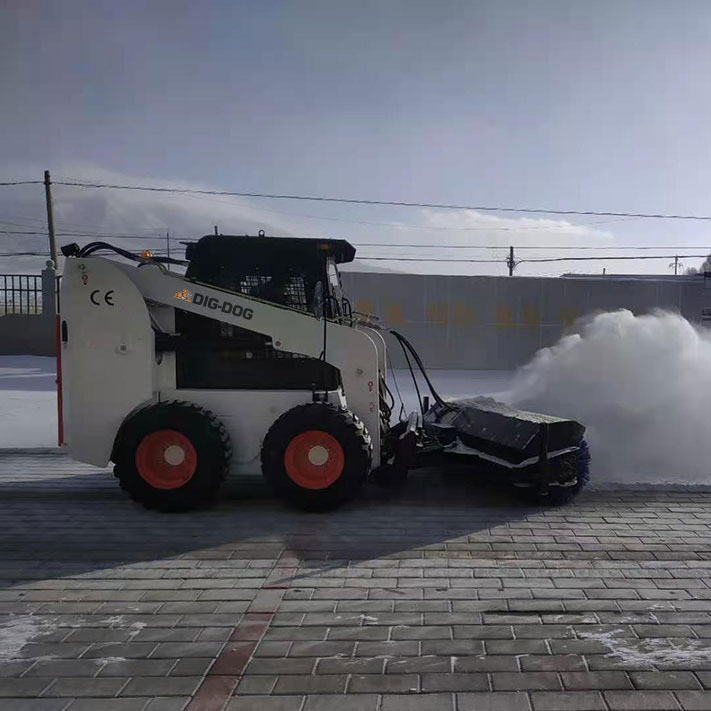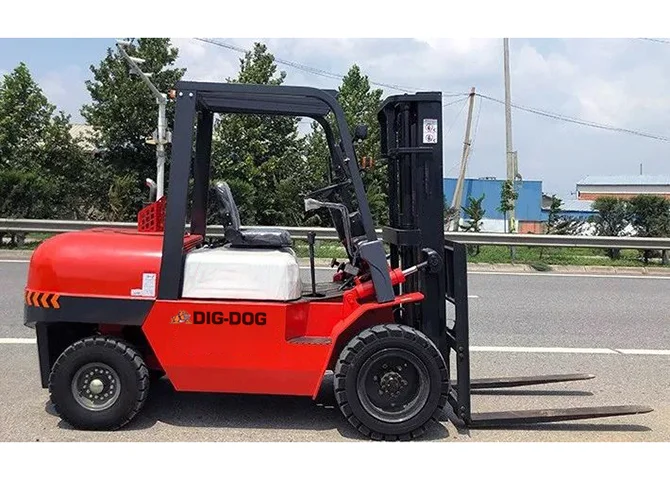Skid steers are apt to do just about any job. Snow removal? Sure, a skid steer can tackle winter work, wielding a variety of blades, snow blowers, salt spreaders and other implements, keeping parking lots and pathways clear and navigable. Wheeled skid steers have traditionally been used for snow jobs rather than compact track loaders, which are basically skid steers with a dedicated track undercarriage, but if properly equipped both can remove snow.

Working against compact track loaders is their light ground pressure. This is great for leaving a light footprint on delicate lawns but a disadvantage in the snow business (unless maybe an operator is looking to climb over and on top of the snow). A skid steer uses four tires that have less contact with the slick ground surface, and it can exert more downward pressure on the attachment to perform quality scrapping, scooping and pile action. Plus, skid steers function better on hard surfaces (like pavement and over curbs) and are quicker (another pro in fast-paced snow removal work).
That being said, many track loader makers offer all-season or snow tracks, which can allow a track loader to do snow work. Correspondingly, skid steers will need to be equipped with snow tires and a variety of other snow-specific upfits to perform and endure the long, cold, dark hours of winter work. Which machine to use will depend largely on what machine is available.
A customer that works in landscaping applications in the summer may also be involved in snow clearing in the winter and would likely own a compact track loader, While a paving contractor or municipality, for example, may prefer to utilize their existing skid steer assets for snow clearing in the winter. Utilizing these existing assets year-round may require some planning when transitioning from one season to another. For a skid steer owner, this may require the exchanging of traditional skid steer tires for a more aggressive snow tire.
The proper tires and tracks are just the start. From cold weather prep and attachments to building the ultimate cab with snow-work automation features, here are a variety of insights into outfitting and operating a skid steer or track loader for snow removal applications.
Prep & Maintenance
Before we get into the awesome attachments, cool cab options and automated technologies available for snow-focused loader work, let’s first think about winterizing that unit. For starters, if that loader doesn’t have the proper engine oil, engine coolant, hydraulic oil and fuel for operating in colder temperatures, it will struggle. Dig our sidebar below for a quick rundown on adapting fluids for cold weather work. Of course, fuel quality is always super important.
Extreme temperature swings are common during the winter months,keeping your skid steer’s fuel tank topped off whenever possible will reduce the amount of condensation that can build up inside. Modern diesel engines are sensitive to fuel type and moisture content. Make sure you check the fuel filter and water separator frequently during the winter months.”
Check the skid steer’s tire condition and pressure often, and check all the lug nuts. Cold weather makes the rubber stiffer. If the tires are sagging after a dip in temp, fill them up to capacity and repair any leaks suffered in the busy season, ensure proper tension, noting bar-style tracks are preferred for snow work. It’s also critical to keep the track undercarriage clear of ice and mud that can often build up, causing rollers to seize and not turn.
Test that the heating, defogging and defrosting systems are all working. Run a load test on your battery and check wires and connections for wear or corrosion. An engine block heater can keep the diesel fuel from gelling up while the machine is off. If a loader is sitting in a parking lot unused for long periods between events, switch off the battery disconnect while waiting for the next big snow. Check grease points every day to avoid unnecessary wear on the pivot points and to reduce those annoying cold weather squeaks. Similar care should be taken for the attachments, making sure all are greased and fully functional.
Attachments deserve the same level of maintenance attention as the loader itself during your scheduled maintenance checkup. Inspect the hoses, cylinders and guards, cutting blades and edges for signs of wear or damage. Determine if the attachment requires maintenance or lubrication. Check the fluid levels before you head out into the cold.
 BONOVO Group at INTERMAT 2024 Paris Exhibiton
BONOVO Group at INTERMAT 2024 Paris Exhibiton
 A Ultimate Guide to Clamp Forklifts and Attachments
A Ultimate Guide to Clamp Forklifts and Attachments
 How To Choose The Right Compact Wheel Loader
How To Choose The Right Compact Wheel Loader
 How Much Does a Forklift Weigh?
How Much Does a Forklift Weigh?